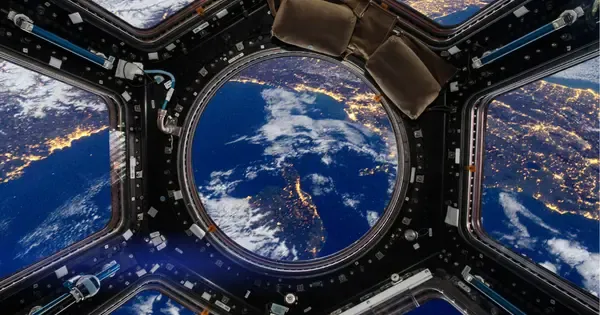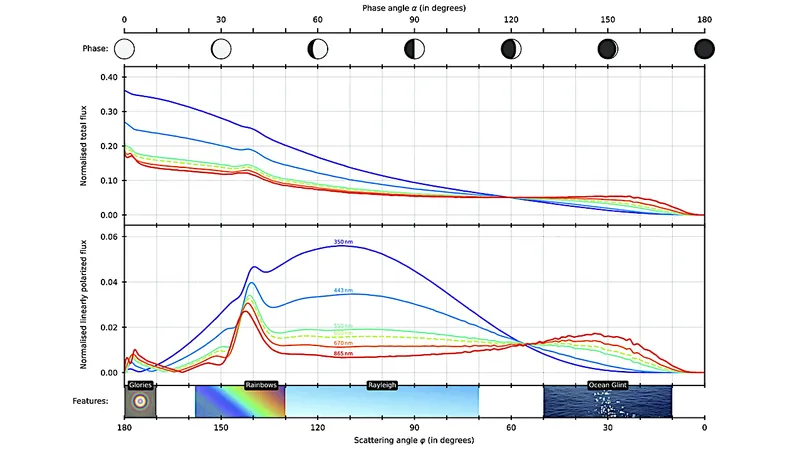
The Untold Story of 1970s Space Colonies: Why Did They Never Launch?
2025-05-31
Author: Li
Imagine a future where humans thrive in massive space colonies, floating gracefully above Earth. A tantalizing vision once brought to life by scientist Dr. Gerard Kitchen O’Neill in the 1970s, it seems like a plot straight out of a sci-fi movie. While Elon Musk dreams of conquering Mars, the idea of a thriving human habitat in orbit remains largely forgotten.
A Bold Vision in Troubling Times
In the midst of an environmental crisis on Earth, O’Neill presented groundbreaking ideas for giant orbital habitats that could house tens of thousands of people in green, self-sustaining environments. His detailed proposals, prepared at NASA’s Ames Research Centre and shared with American senators, almost made the extravagant dream of space colonies a reality.
The Roots of the Idea
O’Neill’s inspiration sprang from a computer simulation known as World3 and a 1972 MIT report asserting that Earth couldn’t support an ever-expanding human population. He envisioned these colonies as a solution to the looming crisis, promoting the use of recycled materials and relocating industries and energy production off-planet to alleviate pollution.
Three Daring Designs
O’Neill conceptualized three innovative types of space colonies: 1. **Island One** - A rotating sphere near the equator, designed to grow and evolve with each generation. 2. **Stanford Torus** - This giant, wheel-like station would accommodate around 10,000 inhabitants, equipped with reflective mirrors to harness sunlight. 3. **Island Three** - The pinnacle of his vision, featuring two enormous cylinders, each 32 km long, rotating to simulate Earth’s gravity. This ambitious design aimed to create a self-sustaining ecosystem where agriculture thrived while providing ample living space.
A Revolutionary Energy Solution
O’Neill didn’t just dream of living in space; he planned to power it sustainably. He proposed large solar arrays to gather energy and convert it into microwave beams, providing a revolutionary way to distribute electricity back to Earth.
A Feasible Plan or Just a Pipe Dream?
In 1976, the U.S. Senate Subcommittee on Aerospace Technology deemed O’Neill’s vision feasible, sparking excitement about colonizing space. Yet, the dream was stymied by a critical issue: NASA lacked the launch vehicles necessary to realize these grand plans. O’Neill’s reliance on the then-untested Space Shuttle ultimately proved to be a stumbling block; the shuttle was not ready for such an ambitious mission.
What Happens Next?
With climate change and global warming escalating, can we revisit O’Neill’s bold vision after more than 50 years? Is it within our grasp to finally turn the dream of sustainable space colonies into reality? As we stand at a crossroads, the legacy of Dr. Gerard Kitchen O’Neill challenges us to think bigger and bolder about our future among the stars.


 Brasil (PT)
Brasil (PT)
 Canada (EN)
Canada (EN)
 Chile (ES)
Chile (ES)
 Česko (CS)
Česko (CS)
 대한민국 (KO)
대한민국 (KO)
 España (ES)
España (ES)
 France (FR)
France (FR)
 Hong Kong (EN)
Hong Kong (EN)
 Italia (IT)
Italia (IT)
 日本 (JA)
日本 (JA)
 Magyarország (HU)
Magyarország (HU)
 Norge (NO)
Norge (NO)
 Polska (PL)
Polska (PL)
 Schweiz (DE)
Schweiz (DE)
 Singapore (EN)
Singapore (EN)
 Sverige (SV)
Sverige (SV)
 Suomi (FI)
Suomi (FI)
 Türkiye (TR)
Türkiye (TR)
 الإمارات العربية المتحدة (AR)
الإمارات العربية المتحدة (AR)